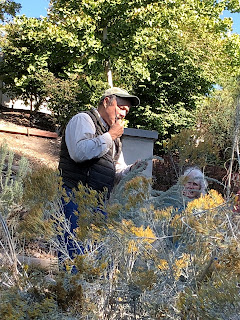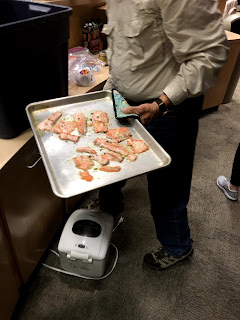As summer comes to a close, many people are looking for a short, last minute vacation. Utah could not be a better place for getting outdoors! Utah boasts five reputable national parks- Zion National Park, Bryce Canyon National Park, Capitol Reef National Park, Canyonlands National Park, and Arches National Park. Each park has something unique to bring to the table in terms of physical geography and biodiversity. If you are thinking of going to multiple national parks in a year, it is best to get an annual pass!
Here are some tips and tricks to enjoying Utah's national parks as much as possible.
-Summer is the busiest time for the parks, so be aware you will be sharing the parks with many people.
-Summer is also a very hot time to be in the parks. Mornings and evenings are a great chance to see some beautiful parts of the parks before the sun gets too high. In cases such as Zion National Park, there may even be hikes like The Narrows, that allows you to get your feet and legs wet during the hottest parts of the day.
-Make sure to take the essentials with you! Bring water, bug spray, snacks, sunscreen, and even a hat if your face burns easily. It is always helpful to take Aloe Vera with you, in case you do end up getting a sunburn.
-Many parks have such popular hikes, you need to get a special permit in order to hike them. Check to see if any of the hikes you wish to go on are restricted by permits. The permits may be in place to help ease the amount of people trekking through a section of the park, or they may be in place because certain gear is required to experience the hike (i.e., ropes, harness, rappelling experience, etc.).
-Check to see the difficulty level and time it takes to finish hikes. That may help you weed out which hikes you do not want to do or are physically not able to do.
-Leave no trace. Always pick up your trash and anything you take with you into the parks. It is also important to never take anything naturally found in the parks. This includes: plants, animals, rocks, etc. While it may not seem like a big deal to take some natural mementos, it can damage the park. The gift shops at the parks are great places to find souvenirs to take home!
-Never feed or touch any wildlife you come into contact with! This is for the safety of you as well as the other animals. By feeding animals human food, they can develop gastrointestinal diseases, become obese, and act more aggressively to humans in want of your food. This also helps prevent you from obtaining a bite from animals that may have diseases that can pass onto you!
-If any of your hikes are in slot canyons, check the weather! Many hiking trails will close if there is even the slightest chance of a thunderstorm that day. This is because slot canyons are incredibly vulnerable to flash floods from even the smallest amount of rainfall. Flash floods are very deadly, so it is important to check with rangers the day you are planning a slot canyon hike, to see what the percentage of rainfall might be.
-Know your limits! Do not try to attempt a hike that seems out of your skill or energy level.
-If you are going on a full day hike, try to plan your time wisely in case you need to turn back. If you feel the day hike may take you longer, be prepared to have materials that will allow you to safely camp overnight in case you cannot finish the hike until morning.
-Bring your camera! The national parks of Utah are absolutely breathtaking and boast some incredible scenery.
-Wear shoes that you have already broken in. Many people purchase new shoes to hike the parks and develop serious blisters.
-Bring A LOT OF WATER. Yes, it was mentioned above, but it is so important to drink large amounts of water on any hike during the summer, that it should be given a few mentions. On days where you are hiking, you should be drinking more water than you do on a regular basis.
-If there are any restaurants nearby, check to see if you can grab a reservation. Some local joints are so popular, you will need to reserve a seat in advance.
-Most importantly, have fun!!! The national parks are true treasures to our nation. They host some of the best natural landscapes of our country and provide a great opportunity to spend time outdoors. The parks are always changing, so you will never know what you will find with each visit.
We hope some of our tips and tricks to the national parks will help you feel prepared to check them out before summer ends! Which national park is your favorite? Comment below!

















































































